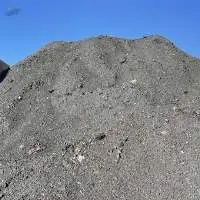
Applications: Chlorine manufacturing In petrochemical manufacturing Rubber manufacturing Caustic Soda manufacturing In animal feed In curing of hides Soap and detergent manufacturing As water softeners In highway or road deicing In textile industries In paper and pulp industries In drilling Packaging: 35 kg per bag 50 kg per bag 1 ton jumbo bag 1.5 tons jumbo bag 2 tons jumbo bag
We are supplier and exporter of Industrial Salt. In Textile industry, industrial salt as dye-enhancer for textiles is used during the manufacture, processing and refining of fabrics and materials, such as for example, dying cotton or the printing of materials. Industrial salt as dye-enhancer for fabrics ensures that the color fully penetrates the fabric and is better bound and looks after the corresponding dyeing process. Industrial salt is used in the oil industry for drilling rig, pharmaceutical industry in making capsules, in textile, metal, FMCG, paper and leather industries.
Supplier: Cast iron skulls, cast iron borings and turnings, steels skulls, eaf skulls, plate iron, mill scale, metal scrap, incinerated scrap (e46)
Industrial Salt HS Code: 250100 PURITY: > 99.4% - 99.7% Industrial Salt Applications: Many of salt's 14,000 uses are found where you'd least expect salt. Salt sets the dye in fabric and is used to produce glass, polyester, plastics, and leather as well as in the chemical industry. Salt assists in cleaning gas and oil wells and is an essential component in the manufacture of paper, tires, brass, bleach, and case-hardened steel. Salt is part of the caustic soda and chloralkali processes. Industrial salts are often purchased in bulk and in various levels of purity depending on the application.
Supplier: Salt and salt chemicals, sodium chloride (salt), sodium sulphate, sodium sulfite, sodium bisulfite, sodium carbonate (soda ash), sodium metabisulphite
We are glad to propose 500 MT of stain less steel mill scale. Mill scale is formed on the outer surfaces during by the hot rolling lamination of stainless-steel products. At a visual inspection the material is a hard brittle sand and is mainly composed of iron oxides, mostly ferric, and is bluish black in colour, but it also contains considerable alloying elements such as chromium and nickel. The recovery ratio after melting in furnace for the most valuable alloy elements is: - Ni: 3.5 - 4.5% - Cr: 6-8% From the chemical and physical analysis performed on the scrap, and according to the European environmental rules, the material has been classified as a special non dangerous waste, listed in green list. In particular the mill scale can be classified as follows: Waste code: 10 02 10 The material is stored on cemented flooring, and it can be loaded loose in tipper trucks or containers. Chemical analysis of the material is available on request.
Supplier: Gypsum rocks, gypsum powder, rock salt (industrial salt and deicing salt), food grade salt, sodium bicarbonate, limestone, white limestone (marble chips), sulphur (granular, lumps)
Supplier: Aluminium ( ingots, t bars, sows, rods), copper (cathodes, cakes, billets, ingots, rods), lead (ingots), nickel (cathodes both cut and uncut briquettes, pellets, discs, etc.), tin (ingots, etc.), zinc (ingots both regular size and jumbos), steel billets (all types including crc, hrc, hdgc, plates, sheets), concentrates and ores for above items including bauxite, manganese, clinker and iron ores etc), scraps of above items including hms 1&2 and steel scraps
Buyer: Aluminium ( ingots, t bars, sows, rods), copper (cathodes, cakes, billets, ingots, rods), lead (ingots), nickel (cathodes both cut and uncut briquettes, pellets, discs, etc.), tin (ingots, etc.), zinc (ingots both regular size and jumbos), steel billets (all types including crc, hrc, hdgc, plates, sheets), concentrates and ores for above items including bauxite, manganese, clinker and iron ores etc), scraps of above items including hms 1&2 and steel scraps



